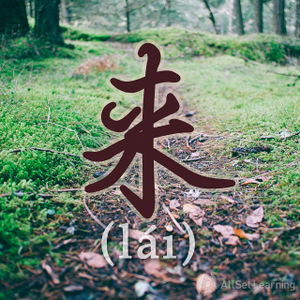Difference between revisions of "Comparisons with "biqi""
| Line 70: | Line 70: | ||
{{Rel char|起}} | {{Rel char|起}} | ||
{{Rel char|来}} | {{Rel char|来}} | ||
| − | |||
{{Similar|Basic comparisons with "bu bi"}} | {{Similar|Basic comparisons with "bu bi"}} | ||
| − | |||
{{Similar|Comparing Specifically with "xiang"}} | {{Similar|Comparing Specifically with "xiang"}} | ||
{{Similar|Comparing}} | {{Similar|Comparing}} | ||
Revision as of 05:53, 2 July 2017
| This article is a stub. Editors can help the Chinese Grammar Wiki by expanding it. |
Using the 比起...来 (bǐ qǐ... lái) structure, you are able to make comparisons between two things (A and B).
Contents
Basic Usage
Structure
In these two structures, 比起...来 is used to compare A and B, with emphasis on A. A can also be placed before 比起。
比起 + B (+ 来) ,A ~
跟 and 和 can also fit in with this pattern:
跟 / 和 + B + 比起来, A + ~
Examples
- 比起上海 ,我 老家 的 物价 便宜 多 了。
- 本科生 比起 博士生 来,学位 要 低 很 多 。
- 比起 你 前 女友 ,你 的 现 女友 漂亮 多了。
- 跟 全麦 面包 比起来 ,白 面包 不太 健康 。
- 跟 中国 菜 比起来,西餐 的 做法 比较 简单 。
Usage of 相比
Structure
相比 + B ,A + ~
和 / 跟/与 + B + 相比 ,A + ~
Examples
- 相比 几十 年 前 ,中国 的 农村 发生 了 很 大 变化。
- 与 几十 年 前 相比,中国 的 农村 发生 了 很 大 变化。
- 相比 网络 广告 ,平面 广告 贵 很 多 。
- 和 平面 广告 相比 ,网络 广告 没 那么 贵 。
See also
Sources and further reading
Books
- 汉语常用格式330例,pg. 16



